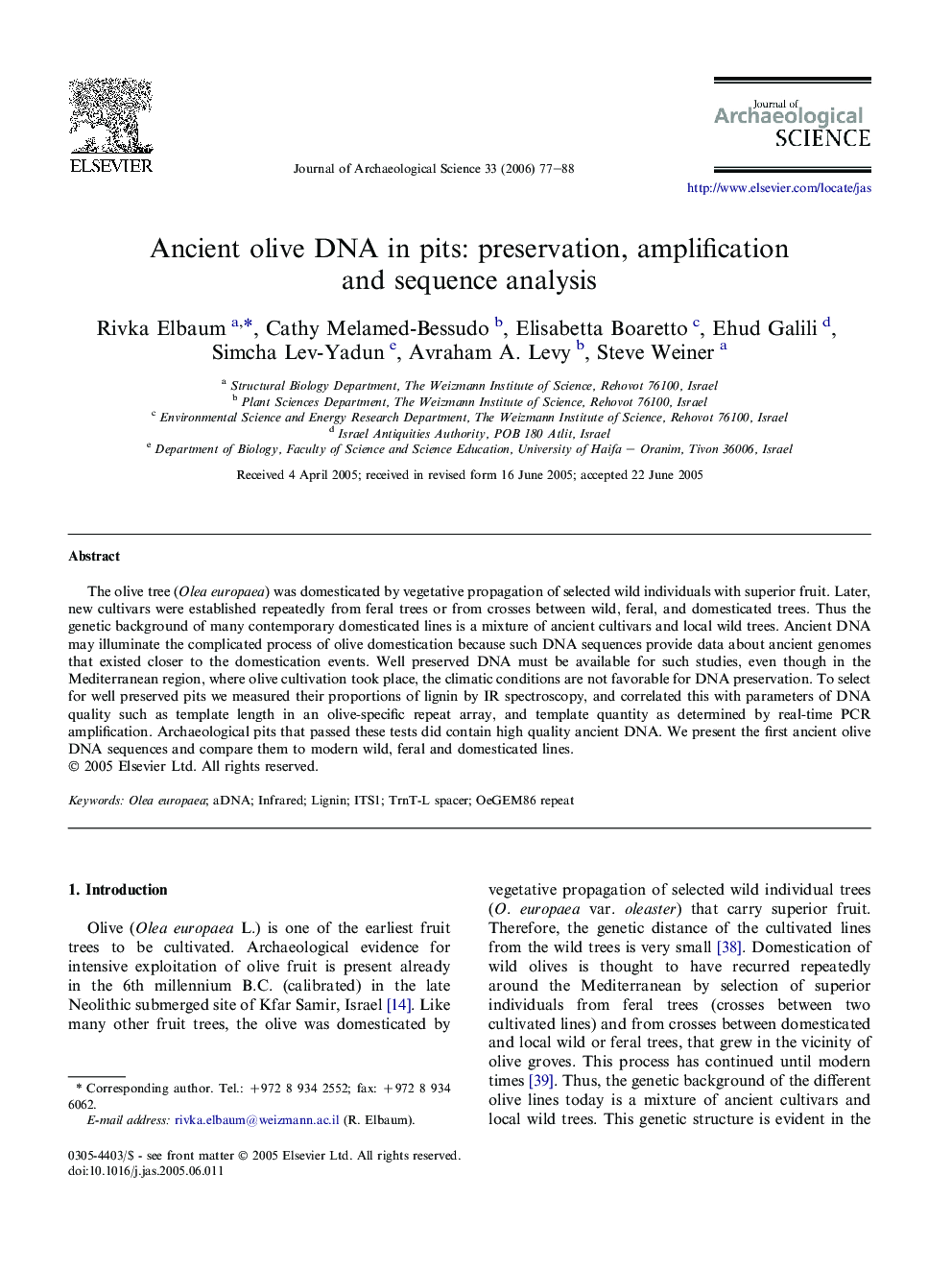| کد مقاله | کد نشریه | سال انتشار | مقاله انگلیسی | نسخه تمام متن |
|---|---|---|---|---|
| 1037727 | 943948 | 2006 | 12 صفحه PDF | دانلود رایگان |

The olive tree (Olea europaea) was domesticated by vegetative propagation of selected wild individuals with superior fruit. Later, new cultivars were established repeatedly from feral trees or from crosses between wild, feral, and domesticated trees. Thus the genetic background of many contemporary domesticated lines is a mixture of ancient cultivars and local wild trees. Ancient DNA may illuminate the complicated process of olive domestication because such DNA sequences provide data about ancient genomes that existed closer to the domestication events. Well preserved DNA must be available for such studies, even though in the Mediterranean region, where olive cultivation took place, the climatic conditions are not favorable for DNA preservation. To select for well preserved pits we measured their proportions of lignin by IR spectroscopy, and correlated this with parameters of DNA quality such as template length in an olive-specific repeat array, and template quantity as determined by real-time PCR amplification. Archaeological pits that passed these tests did contain high quality ancient DNA. We present the first ancient olive DNA sequences and compare them to modern wild, feral and domesticated lines.
Journal: Journal of Archaeological Science - Volume 33, Issue 1, January 2006, Pages 77–88